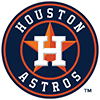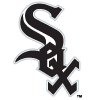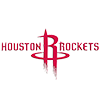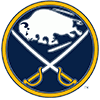Where can we find more blocks?
It's too late in the season for trades, and most of the reliable shot blockers were drafted. The only option is the waiver wire, but shot blockers emerge off the waiver wire only rarely. At this point, owners trying to boost blocks totals are reduced to adding players averaging barely a block a game.
What if we could identify the matchups that are the most block friendly?
Already this season we have identified specific stats that are correlated with increased rebounding and steals. This week, we try to do the same with blocks.
Starting Points
I'm coming into this search with three assumptions. First, opponent blocks has some value, and can be used as a reference point. Second, opponent blocks is not the best way to identify the best matchup for a potential shot blocker. Finally, a team's shot selection patterns will correlate to the number of blocks an opposing shot blocker can swat in a game.
So I set out to combine those three assumptions. I looked at how the league's best shot blockers fared against teams with the highest and lowest opponent block totals. Then, I checked how those same players performed against teams who attempted the most shots close to the hoop (and the least from that distance) and the teams that took the most mid-range shots (least from that distance), etc. Finally, I compared the sets.
We only care about how good shot blockers perform in every data set we
Where can we find more blocks?
It's too late in the season for trades, and most of the reliable shot blockers were drafted. The only option is the waiver wire, but shot blockers emerge off the waiver wire only rarely. At this point, owners trying to boost blocks totals are reduced to adding players averaging barely a block a game.
What if we could identify the matchups that are the most block friendly?
Already this season we have identified specific stats that are correlated with increased rebounding and steals. This week, we try to do the same with blocks.
Starting Points
I'm coming into this search with three assumptions. First, opponent blocks has some value, and can be used as a reference point. Second, opponent blocks is not the best way to identify the best matchup for a potential shot blocker. Finally, a team's shot selection patterns will correlate to the number of blocks an opposing shot blocker can swat in a game.
So I set out to combine those three assumptions. I looked at how the league's best shot blockers fared against teams with the highest and lowest opponent block totals. Then, I checked how those same players performed against teams who attempted the most shots close to the hoop (and the least from that distance) and the teams that took the most mid-range shots (least from that distance), etc. Finally, I compared the sets.
We only care about how good shot blockers perform in every data set we look at. Our end goal is to get our fantasy teams more blocks – we don't want our data skewed by the Bradley Beal's of the league (Beal has only 16 blocks this season, but two came in a single game). If we're trying to add blocks, we're going to focus on big men and some athletic wings.
Lay-Ups and Mid-Range
When I began this search, I thought I knew what to expect. I figured teams that took the most shots close to the basket would be the ones who surrendered the most blocks. If not that, then I thought teams that took the most threes would be the most block-prone.
I was partially right, but partially very, very wrong. There was a strong relationship between teams that took the most close shots and teams that got blocked most frequently. The more shots a team took inside five feet, the more frequently its shots were blocked.
Three-point attempts, however, had no bearing on a team's tendency to be blocked. The relationship was, if anything, remarkable for how absent it was. The math says that if you know how many threes a team attempts, you will be able to predict its block-susceptibility about as well as if you know the coach's favorite color.
The shot-distance data gave one more clue. The more mid-range (15 to 19 feet) shots a team took, the fewer times it was blocked. The relationship was not strong, but it was present enough to keep investigating.
The Very Good and the Regular Good
Blocks have the potential to cause problems for an analysis like this because they are so rare. Even for the best blockers, three blocks is a great game, two a good one and one is pretty normal. To ensure my data wasn't tricking me, I ran my analysis twice. The first time, I focused on the league's top 49 in the category (No. 50, Ian Mahinmi, missed so many games that I left him out). The second time, I limited it to only the 14 players averaging at least 1.5 blocks per game.
Good news! The results were similar for both analyses. The very good shot blockers and the regular good shot blockers performed similarly against each opponent.
Even better news! Opponent blocks was not a particularly good predictor of shot-blocking production. This article is learning something new, and not confirming something that I could have distilled down to a single tweet!
So Opponent Blocks isn't Great … What is?
That's where the bad news comes in. OK, maybe not bad news, just, not all-the-way good news.
There is a lot of overlap between the teams that A) attempt the most shots inside of five feet, B) attempt the fewest shots between 15 and 19 feet and C) have the most total opponent blocks. Generally speaking, the league's best shot blockers block more shots against all three teams. But the relationships aren't clean, and none of the metrics emerges as a great predictor of blocks.
Of the teams I focused on, the Nets were the best opponent for a "rim protector." Top-14 and top-49 shot blockers blocked more shots against them than any team. Both groups averaged more than half a block more per game against the Nets. But the Nets are toward the top of all three factors that I focused on, so they don't help us rule anything out.
The Pistons and Pacers caused opposite problems. Both are toward the bottom of the league in shot attempts inside five feet, and toward the top of attempts between 15 and 19 feet — things that, we hoped, would mean they were swatted infrequently. But they were remarkably average opponents for the league's best shot-blockers.
The Best Results Require More Work
The best way to anticipate blocks is to look at multiple factors.
The three metrics – opponent blocks, shot attempts inside of five feet and shot attempts between 15 and 19 feet – work better together than apart. The best opponents are the ones who rank high in opponent blocks, high in shot attempts inside of five feet and low in shot attempts between 15 and 19 feet.
Looking at all three factors, owners will see that though the Jazz take very few mid-range jumpers, they also take very few shots inside of five feet (they are, after all, the slowest paced team in the league), and they rank very low in opponent blocks. The picture that emerges is accurate — the Jazz are a relatively bad matchup for a shot blocker, but not a terrible one.
On the flip side, the Nets and 76ers average a lot of close shots, few mid-range shots and are high in opponent blocks. That generally sunny outlook for shot blockers is supported by the data.
Here is the link to view team shooting data. Here is the link to view opponent blocks.
Some of the best opponents for shot-blockers are the Nets, 76ers and Thunder, who rank favorably in all three categories.
Some of the worst opponents for shot blockers are the Clippers, Mavericks and Spurs, who rank unfavorably in all three categories.





























